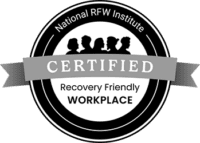The Epiphany of Else: Driving Innovation Through Explorative Inquiry
Questions Inspire New Thinking
The single most efficient way to trigger innovative thinking is by simply asking a question. These are questions that you can ask of others, or (more importantly) questions that you can ask of yourself. By asking a question, you stimulate new and different thinking within the person being asked. They need to reflect upon the question in order to formulate their answer. This equates to the question getting that individual to “think outside the box” (i.e. the “box” being the thought that they had prior to hearing the question). And thinking outside the box – whether you like that term or not – is how the innovation process gets started.
Everyone Can Be More Innovative
Are you part of a business, non-profit organization, government agency, or private entity? Do you have a plan, a strategy, a project, or any sort of process that you’re involved in either designing or performing within? Do you have and are you trying to grow relationships with different people – perhaps customers, partners, fellow employees, investors, or other stakeholders? Then engaging them in such explorative questions and answers can create new, measurable value for everyone involved.
Asking Basic Questions
Everyone who has any sort of plan to help them achieve future success should probably already have answered some of the basic questions that might be asked about that plan. For example, within your strategic plans you’ve probably already addressed some of the following categories of questions:
- WHO (Who is your target market? Who works for/with you? Who is your competition?)
- WHAT (What do you sell? What are your specific goals? What resources do you need?)
- WHERE (Where do you conduct business? Where are your customers located?)
- WHEN (When must you achieve certain milestones? When do you usually engage customers?)
- HOW (How do you create value? How do you measure success? How do you compare?)
- WHY (Why are you in business? Why do customers buy from you? Why aren’t you succeeding?)
Exploring Beyond the Obvious
If you’ve answered most of those questions, you might believe you have all the answers you need. In fact, once someone gets an answer that is “good enough,” they normally stop there and move on to the next topic. That, unfortunately, is how many of us were trained to think in school (that there’s only one right answer). But that way of thinking keeps us trapped inside the box. It is only when we begin to imagine that there might be other options to consider, that we begin thinking outside of that box. When we begin to explore beyond the first, the obvious, the conventional answers…then we are on the path to creating new value.
The Epiphany of Else
The key to thinking beyond the first, “good enough” answers is simply by adding the word “else” to each of the above question types. Who else might want to buy your products and services, to whom you haven’t yet considered marketing? What else – besides what you’ve already included in your design – might you want to add to increase its appeal? Where else might you look to find resources that you could use instead of what you’re currently relying upon? When else are possible times to get your prospective client’s attention and convey the value of your services? How else could you deliver both your marketing message and the actual products you create? And, why else do patients not become more involved in their own health-related decisions and activities? Once you begin exploring beyond just the initial, obvious answers, you trigger the process of probing for additional insights, you then consider more and new possibilities, challenging conventional wisdom, and pushing back on your own (and others’) implicit assumptions. These all facilitate the innovation process. The important discipline to include here is to resist settling for just another acceptable alternative (sometimes called early closure). Rather, you must continue probing, imagining, exploring, and prompting yourself and others – by repeatedly adding else – to participate in brainstorming with everyone’s unique perspectives, experiences, and knowledge.
Real Life Examples
This general approach to innovative thinking can be used by just about anyone. I’ll highlight a few examples here, but there are hundreds more that apply just as well:
- Executives or consultants designing or updating a marketing plan
- Nurses or health insurers engaging patients so that they see and make healthier choices
- Product developers designing new features through iterative prototyping
- Business owners evolving their business model to take advantage of mobile engagement
- Attorneys negotiating a better win-win agreement between two M&A clients
- Doctors diagnosing a patient’s injury or illness by seeking and finding hidden information
- Fundraisers identifying new, values-based messages to convey to potential donors
- Sales reps discovering new services they can provide to customers with whom they’ve already built a trusted relationship
Beginning the Innovation Inquiry
This list could go on for quite some time. What else can you think of, that applies to what you do every day? How else might you think outside of your current box(es), to explore such new possibilities toward your success? If you’re currently short on answers, you can always contact me and I will gladly help you get started. How should you begin? Simply ask a question! You can also submit a comment below and we can begin a discussion. How else might you begin? Consider trying out a new (and free) tool that’s been designed to help remind you and your colleagues to ask such questions: TheInnovationCube.com.






Find Us Online